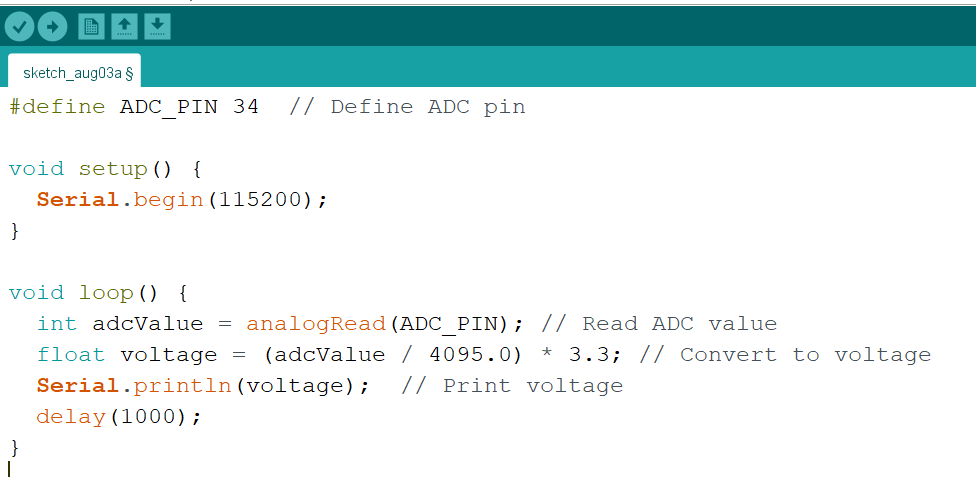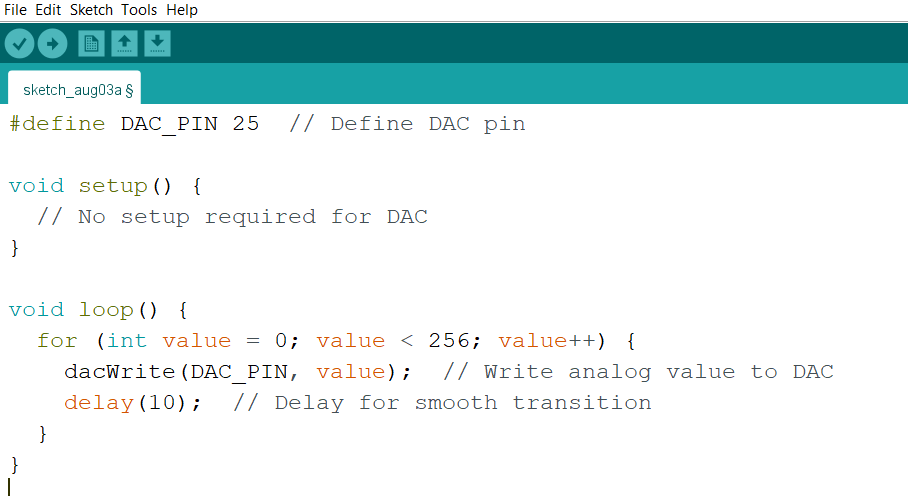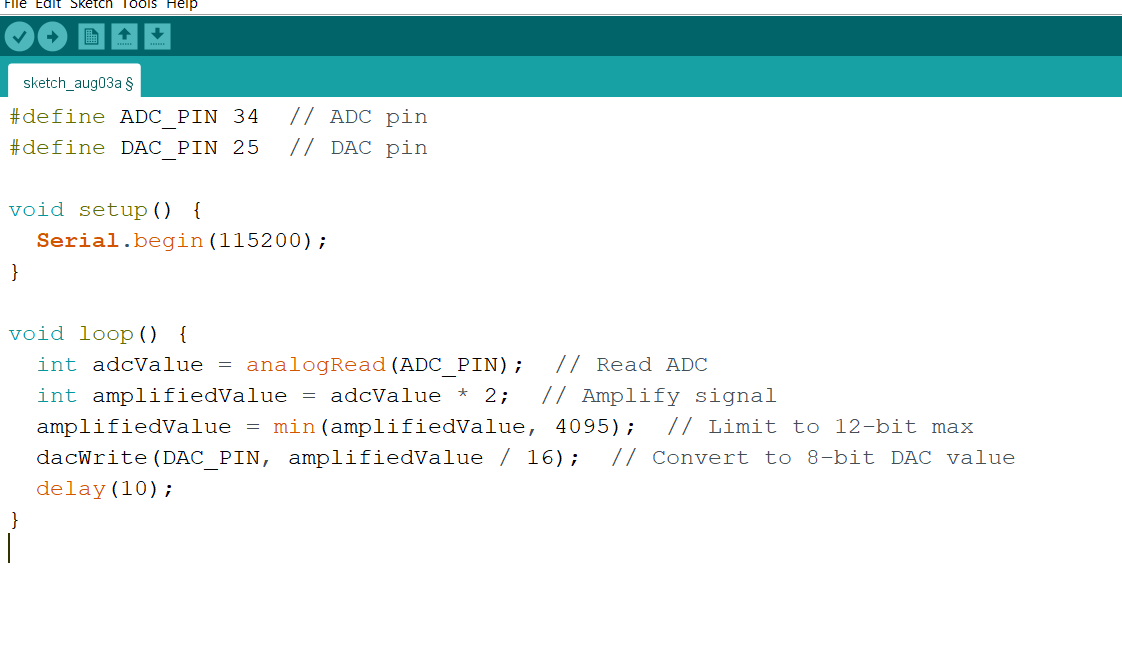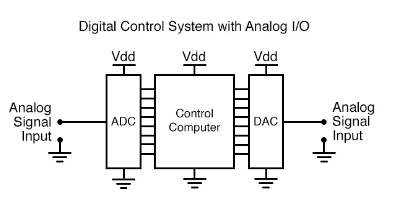Understanding ADC and DAC in ESP32
The ESP32, a popular microcontroller by Espressif Systems, offers robust features for handling analog and digital signals, making it a preferred choice for projects involving signal processing. Among its versatile features are its ADC (Analog-to-Digital Converter) and DAC (Digital-to-Analog Converter) functionalities, which are essential for interfacing with analog devices.
ADC (Analog-to-Digital Converter)
An ADC converts an analog signal (a continuous signal) into a digital signal (discrete values). This is crucial when dealing with sensors and inputs that provide analog output, such as temperature sensors, potentiometers, and light sensors. In ESP32, the ADC module facilitates such conversions seamlessly.
Specifications of ESP32 ADC
- 1. Resolution: The ESP32 ADC provides a resolution of up to 12 bits, meaning it can represent an analog signal as a digital value ranging from 0 to 4095
- 2. Input Range: The default voltage input range is 0 to 3.3V. However, this can be adjusted using the attenuation settings
- 3. Channels: ESP32 offers two ADCs, ADC1 and ADC2, with multiple input channels. ADC1 has 8 channels (GPIOs 32 to 39), and ADC2 has 10 channels (GPIOs 0, 2, 4, 12 to 15, 25 to 27).
- 4. Attenuation: The ESP32 allows setting different attenuation levels (0 dB, 2.5 dB, 6 dB, and 11 dB) to modify the input range, accommodating higher input voltages (up to ~3.9V for 11 dB).
- 5. Sampling Rate: Although the ESP32 ADC can sample signals at high rates, the practical rate depends on the application and software overhead.
Using ADC in ESP32
The ADC module in ESP32 can be accessed through the Arduino IDE, ESP-IDF, or other development platforms. Here's an example using Arduino IDE:

Applications of ADC
- • Reading analog sensors like temperature, humidity, or gas sensors.
- • Monitoring battery voltage.
- • Audio signal processing.
Limitations of ESP32 ADC
- 1. Non-linearity: The ADC in ESP32 has non-linear behavior, especially at the higher end of the voltage range
- 2. Noise: ADC readings may be noisy due to hardware design. Using a low-pass filter or averaging multiple samples can help mitigate this.
DAC (Digital-to-Analog Converter)
A DAC performs the reverse operation of an ADC—it converts a digital signal (discrete values) into an analog signal (continuous voltage). This is crucial when interfacing with devices that require analog inputs, such as speakers, analog actuators, and signal generators
Specifications of ESP32 DAC
- 1. Resolution: The ESP32 DAC provides an 8-bit resolution, offering output values ranging from 0 to 255
- 2. Output Voltage: The output voltage range is typically 0 to 3.3V, depending on the supply voltage.
- 3. Channels: The ESP32 has two DAC channels, DAC1 (GPIO25) and DAC2 (GPIO26).
Using DAC in ESP32
The DAC module can be accessed using the Arduino IDE or ESP-IDF. Here's an example of generating an analog signal using the Arduino IDE:

Applications of DAC
- • Generating analog audio signals.
- • Driving analog actuators like motors
- • Creating arbitrary waveforms for testing and simulations.
- • Producing smooth LED dimming effects.
Combining ADC and DAC in ESP32 Projects
The true potential of ESP32 shines when ADC and DAC functionalities are combined in applications like:
- 1. Signal Processing: Converting an analog input to digital, processing it, and outputting a modified analog signal
- 2. Audio Applications: Recording sound using ADC and playing it back using DAC
- 3. Feedback Systems: Reading analog sensor data and controlling an actuator in response.
Example: Signal Amplifier
In this example, an analog signal is read, amplified digitally, and then outputted as an analog signal

Challenges and Tips
- 1. Calibration: To ensure accurate ADC readings, calibrate your ESP32 using built-in functions or manual methods.
- 2. Filtering: Use capacitors or software techniques like moving averages to reduce noise in ADC readings
- 3. Voltage Matching: Ensure input signals are within the supported range of ADC or DAC to prevent damage.
Conclusion
The ADC and DAC capabilities of ESP32 make it a versatile platform for signal processing applications. While the ADC provides a means to read and process analog signals, the DAC enables smooth integration with analog output devices. By understanding the specifications, capabilities, and limitations of these modules, you can unlock the full potential of the ESP32 in your projects. Whether you're building IoT devices, audio systems, or control systems, the ADC and DAC functionalities of the ESP32 are indispensable tools in your arsenal





